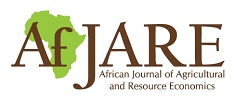Determinants of adoption of rainwater-harvesting technologies in a rain shadow area of southern Malawi
Julius H. Mangisoni, Mike Chigowo & Samson Katengeza
Abstract
This paper examines determinants of the adoption of rainwater-harvesting technologies in a rain shadow area of southern Malawi. The most common ex situ technologies in the area were dams, and the widely used in situ technologies were box ridges, contour markers and swales. Adopters treated, on average, 80% of their farms with the rainwater-harvesting technologies, a move that significantly increased their food security status and incomes. The key finding of the study is that the choice of technologies was influenced by land slope and quality, farm size, soil texture, security of land tenure, education level of household head and extension support. The results therefore underscore the potential gains from rainwater-harvesting technologies in improving farmer income and food security, and the need to promote the technologies as a package, because a household may implement different technologies on the same field depending on diverse social, economic, institutional and environmental factors.
